| View previous topic :: View next topic |
| Author |
Message |
eggboy


Joined: 20 May 2008
Posts: 190
Location: Western Massachusetts, USA
|
 Posted: Thu Feb 08, 2024 2:09 am Post subject: Odd Variant of Jhagee Anast. Exaktar 5cm Prewar Posted: Thu Feb 08, 2024 2:09 am Post subject: Odd Variant of Jhagee Anast. Exaktar 5cm Prewar |
 |
|
eggboy wrote:
I am slowing culling my large hoard of lenses (see link in my signature/footer). "Swedish Death Cleaning" is the term I've heard used, but I suspect some of our European peeps have a better way to describe. I am culling stuff that I do not use regularly, and I find most of my small pre-war lenses with the tiny/narrow focus rings are just too fiddly to use 
This is a somewhat unusual variant of the early prewar 3.5 Exaktar. Different barrel, much finer knurling, markings and focal length than the more typical (but still scarce) Meyer-sourced 5.4cm. This came from a really old pre-war Kine Exakta body that I had purchased probably 10 years ago. The body was in bad shape and was sold on, but this lens was pretty nice so I kept it. I've owned the 5.4cm version, and this lens is noticeably different in the exterior barrel construction.
It is definitely pre-war, but looks to be coated due to the blue-ish tint on the front, back, and interior lens elements. It was not unusual for folks to send lenses back to Zeiss (and others?) after the war for coating (I understand one or both Zeiss's offered this in the late 40's or so as a service to raise badly needed cash) but I would expect that typically happened to higher end lenses?
Lens is a really nice user too: focus is buttery smooth, iris is smooth with dry blades, 14 iris blades, heavy solid brass and glass, and it renders really nice.
The glass is nice, little or no scratches and no fungus. Some slight haze, and, if you hold at the right angle, you can see a few weird blue artifacts, that I believe are slight defects in the coating. One of the pictures of the inner side of the 3rd element looks almost like there is a membrane in the center, but under a high powered loupe, and even VERY gently touching with a cotton swab, it does not seem to be raised...so, I believe when they coated this element they masked around the center, as this element is pressed into a chunky metal cell and not removable. See picture #2.
Overall does not seem to impact photos...sharpness is great, especially at f4 onwards, and contrast is quite good. See the sample pictures, including the issues.
FULL DISCLOSURE: I am selling this on a certain online auction site (Feb 2024) to see if there is any collector interest, but thought I would post the info and pictures here because this does seem to be an interesting lens.
Pictures of the lens:
#1 (inner front lens block, blue reflection)

#2 (inner rear lens, center portion is blue, perhaps this was poorly masked when the coating was done?)
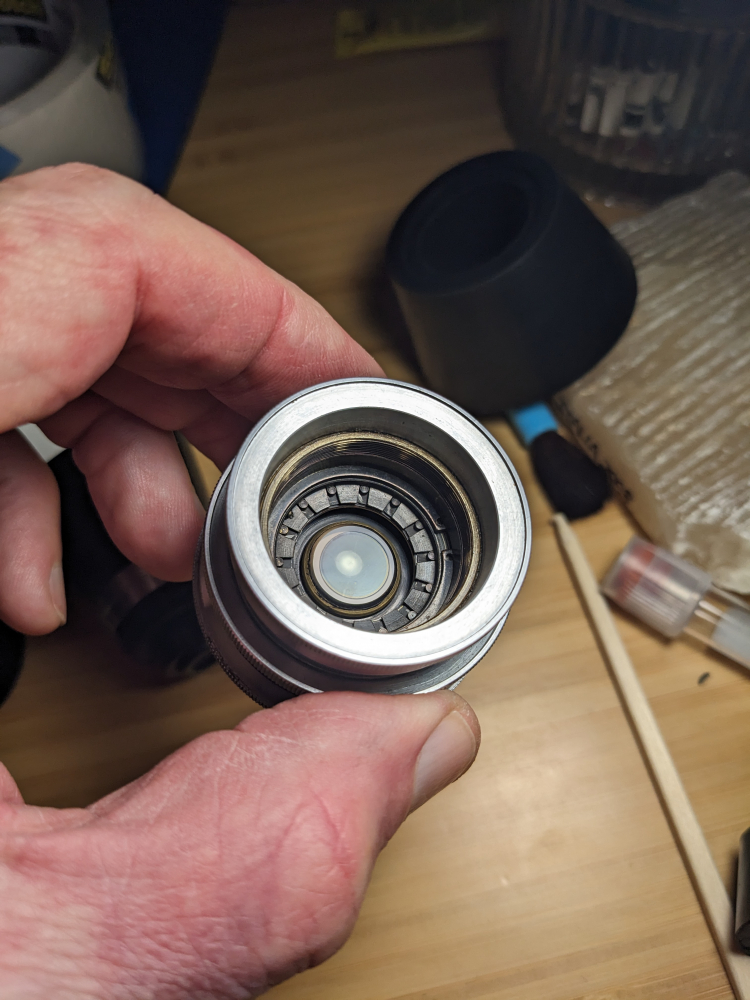
#3 (if you look closely you see "comet" shaped imperfections in the first element inner lens surface)
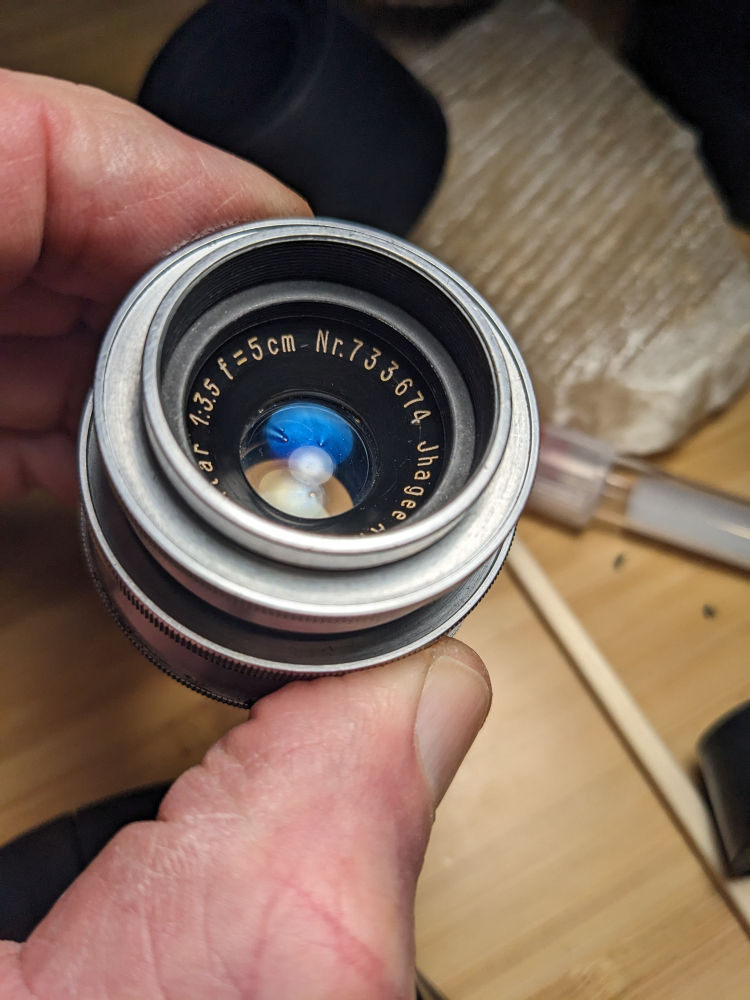
#4

#5

#6
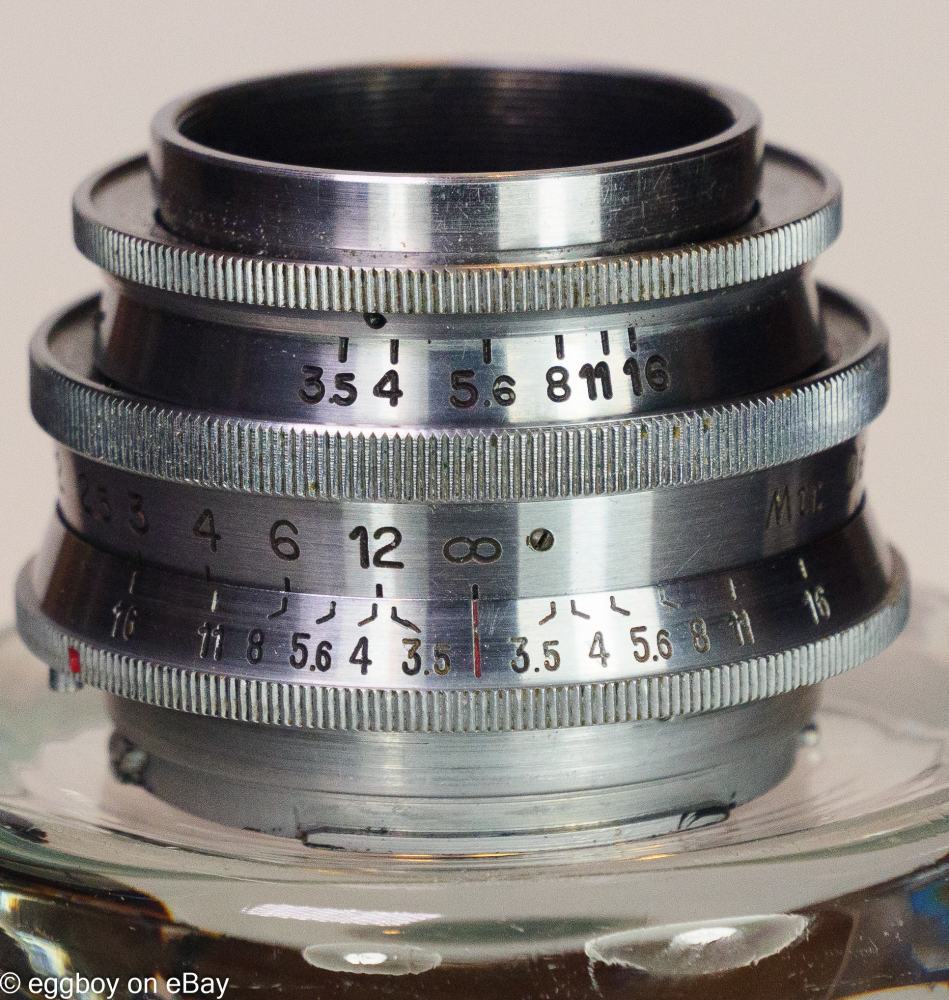
Pictures TAKEN with this lens:
#1

#2
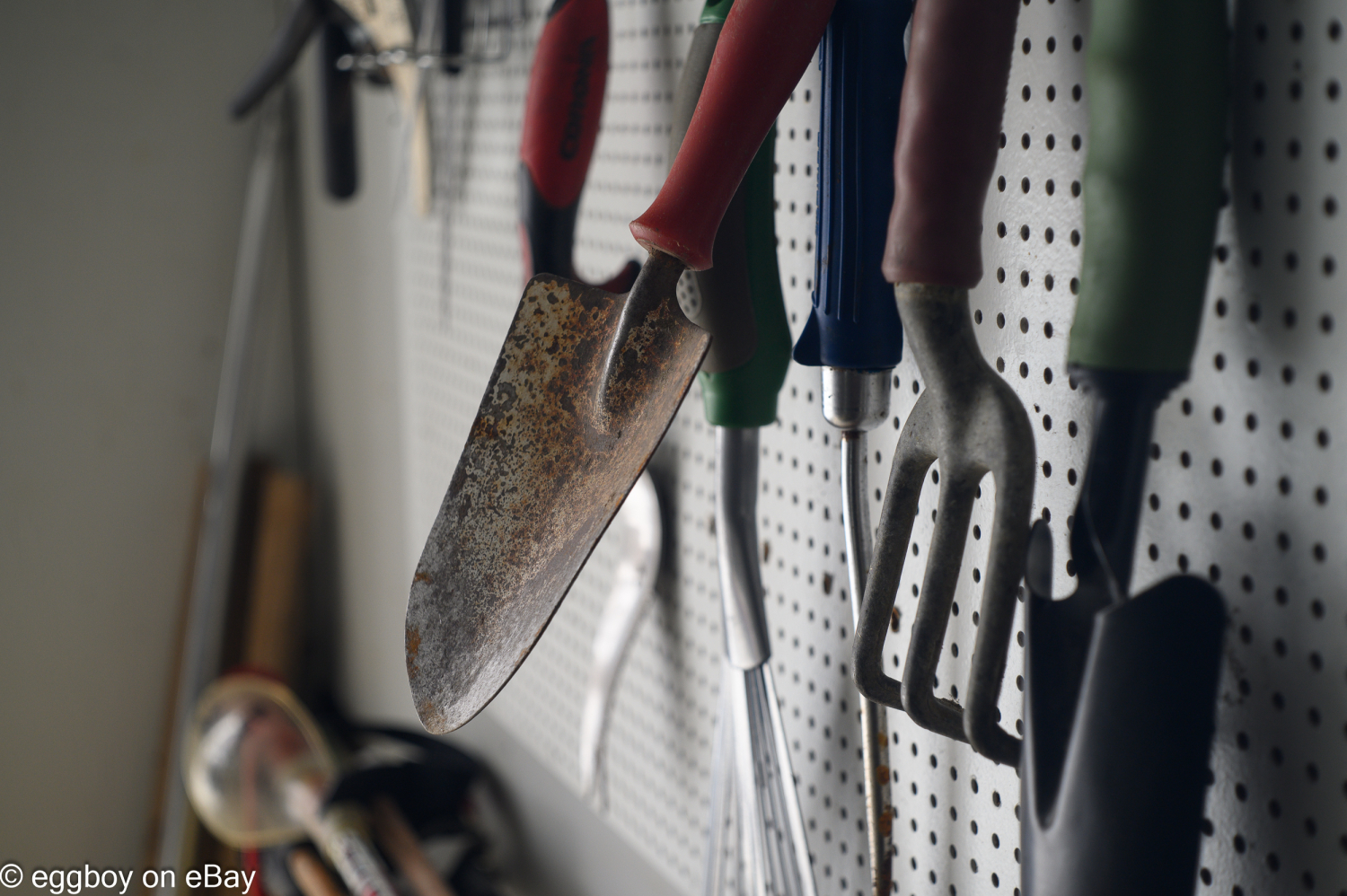
#3
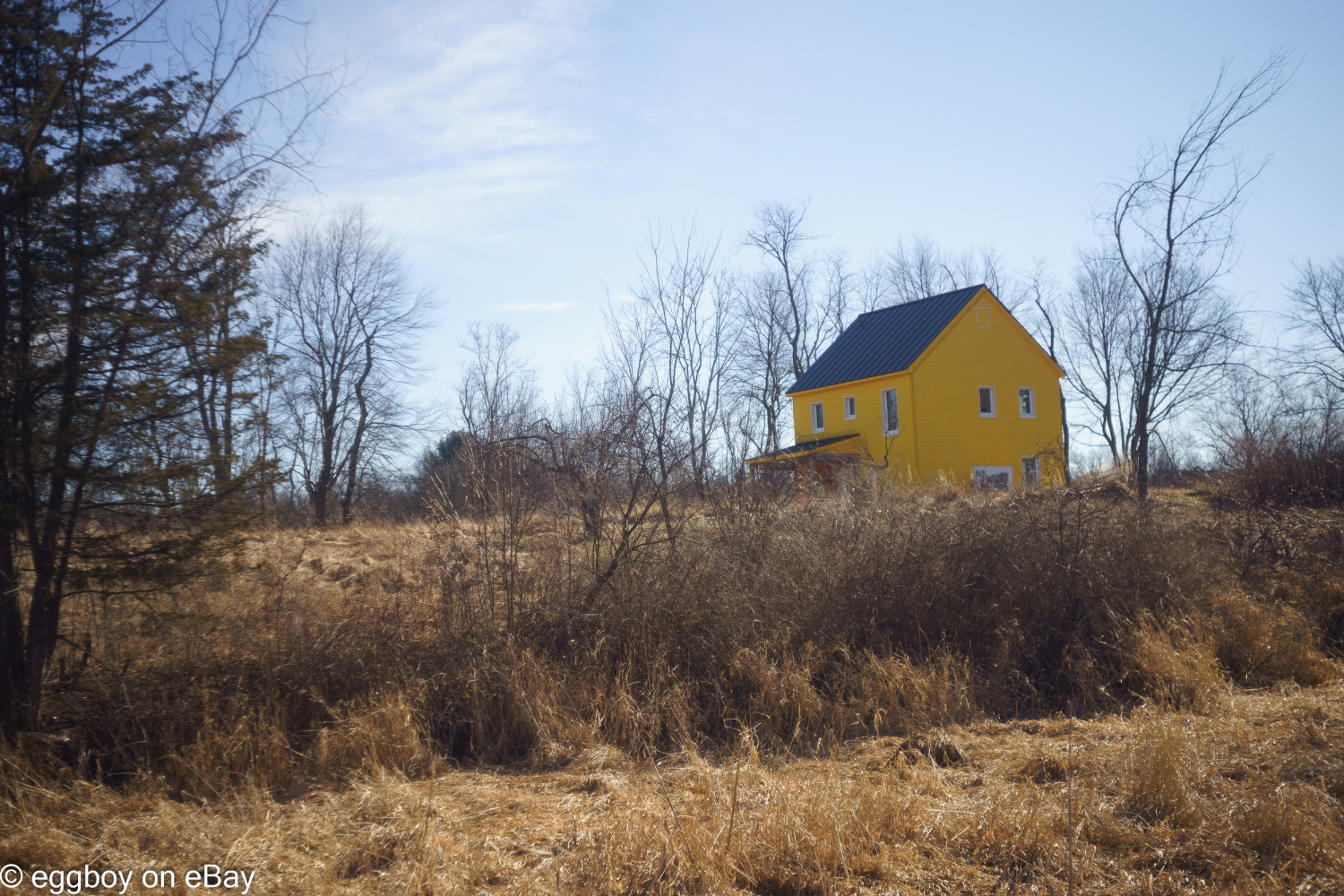
#4

#5

#6

_________________
Eugene
Current Fave Lenses:
Nikkor S.C 5cm/1.4 Rangefinder with Amadeo S>M Mount
Carl Zeiss Jena Sonnar 5cm/2 Contax RF c. 1937,
Nikkor-N 28/2 Nikon F mount
Digital Cameras:
Nikon Z 6II, Panasonic GX8
Film Cameras:
Ansco B2 6x9 Box Camera
Bronica S2
Nikon F2
List and a photo or two of my lens herd |
|
| Back to top |
|
 |
caspert79


Joined: 31 Oct 2010
Posts: 2921
Location: The Netherlands
|
 Posted: Thu Feb 08, 2024 6:59 am Post subject: Posted: Thu Feb 08, 2024 6:59 am Post subject: |
 |
|
caspert79 wrote:
Nice images, succes with the auction! |
|
| Back to top |
|
 |
DrBB

Joined: 26 Mar 2014
Posts: 79
Location: Croatia
|
 Posted: Thu Feb 08, 2024 4:31 pm Post subject: Posted: Thu Feb 08, 2024 4:31 pm Post subject: |
 |
|
DrBB wrote:
Nice one! I have few pre-war lenses (including similar Ihagee Anast. Exaktar 1:3.5 f=5.4cm) and i'm surprised about quality of photos they are producing. Yours is no exception |
|
| Back to top |
|
 |
eggboy


Joined: 20 May 2008
Posts: 190
Location: Western Massachusetts, USA
|
 Posted: Thu Feb 08, 2024 6:34 pm Post subject: Posted: Thu Feb 08, 2024 6:34 pm Post subject: |
 |
|
eggboy wrote:
| DrBB wrote: |
| Nice one! I have few pre-war lenses (including similar Ihagee Anast. Exaktar 1:3.5 f=5.4cm) and i'm surprised about quality of photos they are producing. Yours is no exception |
Looking at various 1937-8 price lists in the US, the 3.5 Exaktar sold for ~$120-130:
http://www.ihagee.org/prices.htm
Plugging that number into an inflation calculator says that's the equivalent to ~$2,800 today...during the Great Depression... Even the base model was expensive, so these lenses were easily the best that technology could make back then. It was pretty good! At the time Germany was unparalleled in their test and measurement capabilities, and glass chemistry.
In contrast an Argus A in 1939 cost $12.50, 1/10 the price, also had a triplet, but just simply nowhere near the quality. You get what you pay for 
The pre-war Tessars, Biotars, Xenons, Xenars, and even Primoplans are really excellent performers within certain parameters.
_________________
Eugene
Current Fave Lenses:
Nikkor S.C 5cm/1.4 Rangefinder with Amadeo S>M Mount
Carl Zeiss Jena Sonnar 5cm/2 Contax RF c. 1937,
Nikkor-N 28/2 Nikon F mount
Digital Cameras:
Nikon Z 6II, Panasonic GX8
Film Cameras:
Ansco B2 6x9 Box Camera
Bronica S2
Nikon F2
List and a photo or two of my lens herd |
|
| Back to top |
|
 |
DrBB

Joined: 26 Mar 2014
Posts: 79
Location: Croatia
|
 Posted: Fri Feb 09, 2024 7:42 pm Post subject: Posted: Fri Feb 09, 2024 7:42 pm Post subject: |
 |
|
DrBB wrote:
I really like that uni design, my Exaktar 5.4cm f3.5, Tessar 5cm f2.8 and Victar 5cm f2.9 looks exactly the same as your lens (outside). Internally, mechanism and optics are completely different. Also, subjectively, I think the quality and performance is much better then their (early) postwar versions |
|
| Back to top |
|
 |
eggboy


Joined: 20 May 2008
Posts: 190
Location: Western Massachusetts, USA
|
 Posted: Mon Feb 12, 2024 3:58 pm Post subject: Posted: Mon Feb 12, 2024 3:58 pm Post subject: |
 |
|
eggboy wrote:
| DrBB wrote: |
| I really like that uni design, my Exaktar 5.4cm f3.5, Tessar 5cm f2.8 and Victar 5cm f2.9 looks exactly the same as your lens (outside). Internally, mechanism and optics are completely different. Also, subjectively, I think the quality and performance is much better then their (early) postwar versions |
Agree. The Schneider Xenar 5cm/2.8 and Xenon 5cm/2 prewar lenses also look and feel very similar to the Tessars etc..
They are all, arguably, from the very zenith of the German photo industry for sheer quality and obsessive dedication to perfection.
Alas it was all lost in the insanity of the next few years, and even though Zeiss and friends made great stuff in the 50's and 60's the amazing heights of materials and workmanship were never fully regained IMO  (tho' the optical results of more modern lenses have higher objective performance) (tho' the optical results of more modern lenses have higher objective performance)
_________________
Eugene
Current Fave Lenses:
Nikkor S.C 5cm/1.4 Rangefinder with Amadeo S>M Mount
Carl Zeiss Jena Sonnar 5cm/2 Contax RF c. 1937,
Nikkor-N 28/2 Nikon F mount
Digital Cameras:
Nikon Z 6II, Panasonic GX8
Film Cameras:
Ansco B2 6x9 Box Camera
Bronica S2
Nikon F2
List and a photo or two of my lens herd |
|
| Back to top |
|
 |
|
|
|
You cannot post new topics in this forum
You cannot reply to topics in this forum
You cannot edit your posts in this forum
You cannot delete your posts in this forum
You cannot vote in polls in this forum
|
